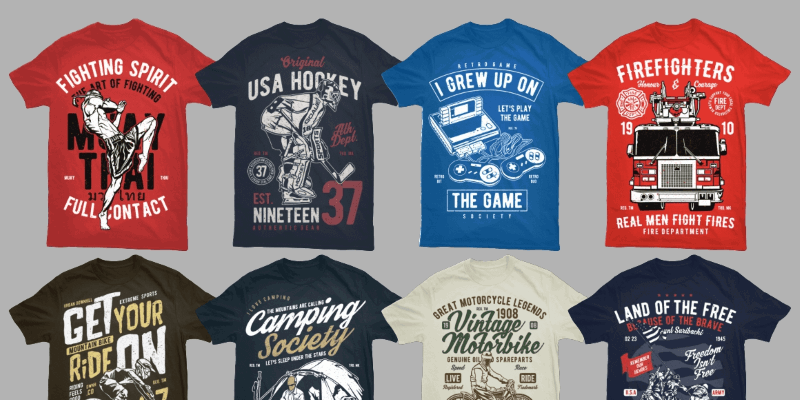Vector-based designs are ideal for t-shirt printing for several key reasons:
1. Scalability Without Loss of Quality:
Vector designs are made up of mathematical paths (lines, shapes, and curves) rather than pixels. This means they can be scaled up or down infinitely without any loss of image quality. Whether you’re printing a small design on the chest or a large one on the back, vector graphics will remain crisp and sharp at any size.
2. Smaller File Sizes:
Because vector graphics are based on mathematical equations, they tend to have smaller file sizes compared to raster (pixel-based) images, like JPGs or PNGs. Smaller file sizes are easier to work with, transfer, and process, which can speed up the production process for t-shirt printing.
3. Clean and Precise Lines:
Vector files are made up of precise paths and curves, which makes them perfect for clean, sharp lines that are needed for most t-shirt designs. This level of detail is especially important for logos, text, and geometric shapes, which need to remain crisp during the printing process.
4. Easier Color Adjustments:
Vector graphics allow you to easily change or adjust colors without compromising the integrity of the design. You can switch out colors in a vector design with just a few clicks, which can be especially helpful if the design needs to be altered or customized for different shirt colors or specific client requests.
5. Better for Screen Printing:
For traditional screen printing, each color in the design must be separated into its own screen. Vector designs are perfect for this because they can be easily separated by color, and the design can be reproduced with precision across different screens. The sharpness and consistency of vector artwork also ensure that each color is printed clearly.
6. Reusability:
Because vector files are based on a set of instructions (rather than pixels), they can be reused for different projects without losing quality. You can take a vector logo and print it on t-shirts, hats, stickers, posters, and more, maintaining the same high quality across all applications.
7. Widely Supported by Printers:
Most professional printers and printing methods (such as screen printing, direct-to-garment printing, or heat transfer) support vector files (like .AI, .EPS, or .SVG formats) because they are easier to work with and yield better results. This compatibility ensures that the final print will have the highest quality.
In contrast, raster designs (like JPEG or PNG files) can become pixelated or blurry when resized or printed at large sizes, leading to poor print quality. While raster images can still be printed on t-shirts, they generally require higher resolution to look good, which can create challenges for certain printing methods.

